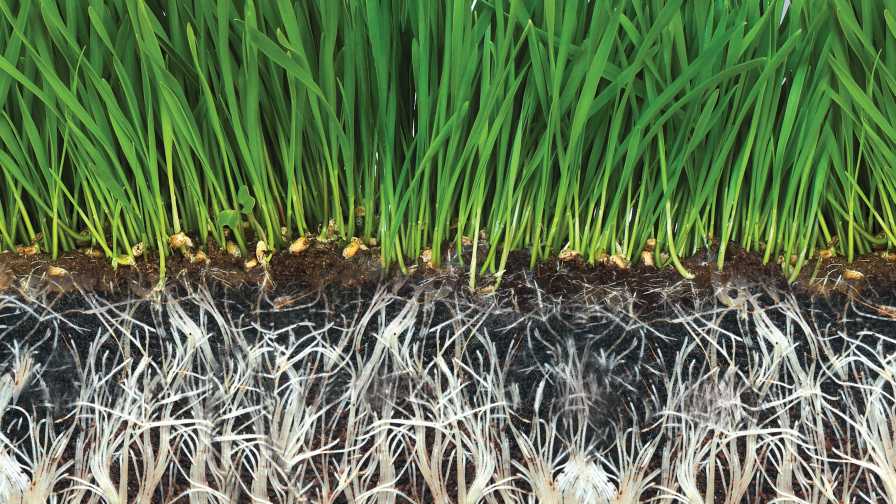So You Think You Know Something About Biostimulants
 At this point, you have almost certainly heard about biostimulants. You may even have trialed them in your production. But you’re forgiven if you can’t explain just exactly what biostimulants are. In fact, there’s no universal, officially agreed-to definition. Let’s start by talking about what they’re not.
At this point, you have almost certainly heard about biostimulants. You may even have trialed them in your production. But you’re forgiven if you can’t explain just exactly what biostimulants are. In fact, there’s no universal, officially agreed-to definition. Let’s start by talking about what they’re not.
Unlike crop protection products with their familiar (and strictly worded) labels, biostimulants are not — so far, anyway — regulated by EPA. That can make things a little confusing for you as you’re trying to evaluate different biostimulant types and determine which products to use.
Despite what you might have heard about some products, they aren’t fertilizers. Biostimulants can help plants take up the nutrients they need more efficiently, but these are not plant nutrition products. Likewise, while they can help improve the overall health of a plant, making it a bit more resistant to damaging insects or diseases, biostimulants are not crop protection products either.
So, what are biostimulants?
The Biological Products Industry Alliance (BPIA) defines a biostimulant as: “A material that, when applied to a plant, seed, soil or growing media — in conjunction with established fertilization plans, enhances the plant’s nutrient use efficiency, or provides other direct or indirect benefits to plant development or stress response.”
It’s that last part that muddies an otherwise clear definition. But we can add some clarity.
Biostimulants can help make plants more tolerant to various environmental stressors, including weather, temperatures, drought, and even soil conditions. They can enhance the development of soil microorganisms. Often, these materials can stimulate root growth and aid in a plant’s ability to effectively uptake the nutrients it needs. And with healthier plants you have the potential to improve overall crop quality and harvestable yield.
In short, used correctly, these are tools that have the potential to help you grow a higher quality, more profitable crop more efficiently, and possibly more cost-effectively.
Types of Biostimulants
Chances are you have been using biostimulant-type products already. There are three primary categories.
Acid-based Biostimulants
Humic and fulvic acids are used to improve soil structure and function, enhance plant nutrition, and contribute to improved crop yield and quality. They can be applied in various ways, including direct application to the soil, foliar application, incorporation into fertilizer and other products, and through irrigation water.
Amino acid products can be derived from the chemical or enzymatic hydrolysis of animal, plant, or microbial protein. The protein sources are often recycled waste products of agricultural crop residues or animal processing such as collagen, epithelial tissue, crustacean shells and other materials. Recycling these otherwise waste substances into useful agricultural products is a unique environmental benefit of protein-derived biostimulants. There is strong evidence for a variety of benefits, including improved soil fertility, better plant health and vigor, enhanced crop yields and quality, and improved stress tolerance.
Seaweed and Plant Extracts
Seaweed extracts can improve soil structure, water retention, and aeration, as well as help fix or chelate nutrients and improve cation exchange capacity (CEC). They have also been shown to aid in the functioning of beneficial soil microorganisms, and to improve the provisioning, uptake, and utilization of plant nutrients. Improved stress tolerance effects have also been broadly reported.
Plant extracts (or botanicals) are less well studied, but the use of allelochemicals — active plant compounds that can be extracted and concentrated — is an especially active area of both industry and academic research.
Microbial Biostimulants
Beneficial fungi and bacteria include a wide variety of microbial products sold as biofertilizers, plant inoculants (to aid primarily in nutrient processing), soil amendments, and other beneficial additives. Microbial products have been shown to enhance plant growth through various direct and indirect mechanisms; and to help with nutrient availability and uptake, improving soil condition, helping plants tolerate abiotic stress, and enhancing overall crop quality attributes.
To learn more about biostimulants and their potential to help with your crop, register now to attend the Biocontrols USA East Conference & Expo, Oct. 11-12, Rochester, NY.










